The Internet of Things wave is on its way to shake our Information Governance practices and policies. How should organizations get ready for these new challenges?
The Internet of Things consist of all the appliances and items that you used on a daily base, that are becoming increasingly connected and smart, communicating with other machines and other people. These technologies are becoming much cheaper to do so, much more wide-spread, while new uses and applications are being discovered every day.
The nature and volume of data is changing, becoming increasingly diversified and tremendous. As a matter of fact, forecasts suggest that 50 billion devices will be connected to the Internet by 2020.
The potential the Internet of Things packs up is staggering, however it will also be highly disruptive to businesses that will have to seek out new information governance strategies to handle this explosion of data and devices. In this article we will explore the changes the IoT will bring for enterprise information governance.
As the IoT will brings in new opportunities, especially in analytic and visualization applications, major information management challenges will follow including data governance, integration, quality, privacy and security. The graph below illustrates the results of a survey conducted among IT pros about the top governance issues.
The Main Challenges: Security & Privacy
As the IoT will brings in new opportunities, especially in analytic and visualization applications, major information management challenges will follow including data governance, integration, quality, privacy and security. The graph below illustrates the results of a survey conducted among IT pros about the top governance issues.
Concerns about the adoption of the IoT are diverse, as shown above. However two main concerns stand out: the increased security threats (for 38% of the IT pros interviewed), and data privacy (for 28%).
When it comes to these issues, you want to counter it by exercising control over your data, and there are several ways to do so.
First, keep in mind that as much as you want it, you cannot control all the data. So what should you do? You should start by introducing the concept of ‘trust levels’ in your information governance strategy: identifying the trusted sources of data, delete the low value and non-trusted streams, leverage data according to its trust level, and establish a governance process to manage these trust levels.
Second, you should consider revisiting your information policies in term of security. Information governance policies will need to be updated to account for the increasing volume, natures, and sources of data. These policies should prioritize information security and carefully consider implications of new data streams. Notable changes would include: revising access controls, enhanced anonymization of data (especially when customer, citizen or patient data is involved), protection of personal mobile devices, and reconsideration of retention schedules with regards for risks.
Getting the Value from your data
Another challenge will be to extract value from such vast amount of data streams, without ending buried under it. An IBM research estimated that 90 percent of all data generated by connected devices is never analyzed or acted on, and that as much as 60 percent of this data begins to lose value within milliseconds of being generated.
This will translate into the expansion of the existing information governance systems and capabilities, integrating the new technologies, new levels of automation, new policies and best practices to handle the volume, variety and velocity of information spread across various streams and databases.
It will include reconsidering e-discovery to support the increased variety of data. Indeed, the many more source of data are going to be a challenge to identify what is really needed for e-discovery. The new practice should involve a focus on identifying and selecting the highest value data streams where the most important and relevant information reside. The new discovery strategy should also be tailored to collect relevant data through IoT devices, whether that data resides within a cloud application, a mobile device, social networks, or any other smart appliance.
The velocity of the data will also require a real-time analysis and advanced analytic practices to analyse multiple streams in real-time. Expect the analytic environment to get much more complex and to see more and more emerging technologies such as file analysis that help provide an enhanced insight of the expending volume of unstructured data, and help categorize information assets to be governed.
To conclude, the Internet of Things is already around us and is here to stay, which is at the same time an opportunity and a risk. We will have to reconsider our information governance practices and policies to take into account the challenges that comes with it, as well as to take advantage and capitalize on the value it holds. Companies capabilities to foresee and rethink their information governance will be a key differentiator in the coming years and the early birds will surely enjoy the ripest fruits.[/vc_column_text][vc_empty_space height=”70px”][vc_column_text]


